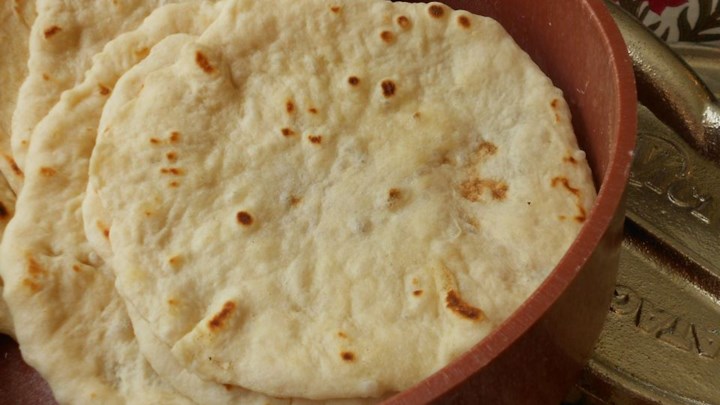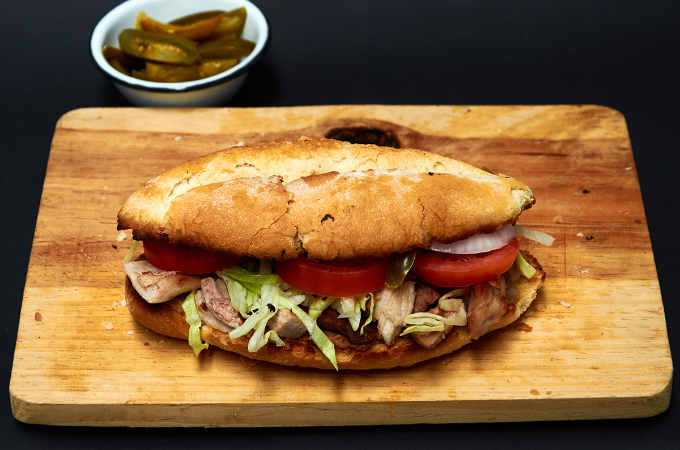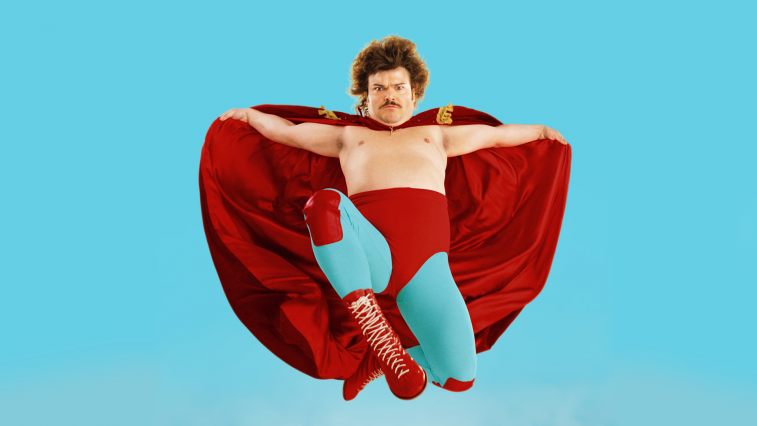ERES LO QUE COMES
- TLALOCO
- Feb 8, 2020
- 6 min read
Updated: Feb 17, 2020
In the spirit of José Antonio Burciaga's, Drink Cultura; Chicanismo (1992), a satirical piece about the Chicano experience of living within, between and sometimes outside of two cultures...AND Ernesto Todd Mireles, Insurgent Aztlán; The Liberating Power of Cultural Resistance (2020), which speaks about the organizing challenge of creating a insurgent identity among Raza that fosters a “return to history” to build a consensus among Raza, who are a complex collective of culturally, educationally, politically, and economically diverse people, to reclaim their historical presence in the Americas and the world...PuroChisme offers its own alternative viewpoint - that get to the gut of the problem - regarding the vulgarity of assimilation aquí en los Estados Unidos. Based, on our high editorial standards, we promise not to put too much "crema on the taco" in describing the horrors of acculturation gone sour!
One of the common sayings we all grew up with was, “Eres lo que comes” – You Are What You Eat. On its surface, it makes sense, you eat too much you get fatter. You eat unhealthy food, you get sick. But recently a friend reminded me that this dicho applies to our psyche tambien. You see food can influence how we see the world around us and vice-a-versa. This is not PuroChisme!
Now that I’m considered a chingon Sabio to my grandchildren, I get these moments of enlightenment (some call them flashbacks). I may have reached the apex of the wisdom mountain, when I realized the truth about food. You see, food has more than an effect to the body, it’s not just a physical thing. It also has a profound influence on our consciousness.
If we’ve unknowingly changed our outlook about ourselves and the world around us, it’s not our fault. It is the fault of those that fed us as children and the community that gave us school lunches and fast-food restaurants in college.
I for one, grew up eating tortillas, hechos a mano, every morning. They were filled with chorizo con papas or huevos con salsa, all made fresh from the garden or mercado. My abuelita would throw in an occasional bowl of Rice Krispies or crème of
wheat to keep my acculturation to American food steady and uneventful. I was also lucky, and had my fill of fruit from our citrus trees and veggies in the backyard jardin of Los Angeles.
Tacos and burritos were our primary food stock for meals. My abuelita filled them with whatever was cooking that day or leftover from yesterday. She understood English but preferred to speak Spanish most of the time. She enjoyed playing Lotería and Chinese Checkers - she was an original Internationalist.
She forced me to watch World Wrestling Federation; Freddie Blassie, Bobo Brazil, and Mil Mascaras. They were acting for sure, but they were my only role models and became my childhood heroes. Cultural traditions just slightly influenced by the new country my family had embraced. I was first generation and didn’t even know it...yet!
But something happened when I entered elementary school. First, I was introduced to the fork. Yeah, I knew what a spoon was for – I ate menudo y caldos regularly – but a fork? I used tortillas to pick up food for the first 6 years of my life. I watched how the expert 6-year old’s around me used the strange utensil and I was quick to master it! I was no “Pencil-neck Geek” as Freddie Blassie used to say.
That is the moment, my life changed dramatically. It wasn’t impacted from moving, apartment to apartment, nor was my life changed moving to new schools and making new friends. Which is what happened, at that time in my life. What changed for me was so much more powerful. It was the fork!
The fork allowed me to try different foods, mainly, American cuisine. Like salads, steaks, and pancakes. Because of these new foods in my diet, I wasn’t playing international table games anymore. Nope, I was learning Monopoly and Scrabble. I ignored my WWF heroes and became addicted to…MAD magazine.
My intellectual growth was spurred by “Snappy Answers to Stupid Questions,” or "The Lighter Side" which satirized suburban life & capitalism, and "Spy vs Spy," the silent parable about the futility of mutually-assured destruction. Sure, a MAD education may not have helped my college experience and promotional opportunities. But I nonetheless believed, like most MAD aficionados, that I could promote to the highest level of my incompetence. My goals, like my food, had no boundaries. You see, I had the advantage of two cultures and my diet proved it.
From my taco/burrito upbringing, I soon ventured into the world of fast food. It was all the rage. Burgers & Fries, Mac & Cheese, and Grilled Ham & Cheese. When the corner burger joints caught on to the simplicity of slapping refried beans in a flour tortilla with anything that would sell – hash browns, eggs, bacon, chorizo, carne asada, pastrami and cheese…lots of cheese – Raza cuisine had become just another monetary quotient.
I realized I could keep a piece of my cultural raize intact. Food was inspiring me to change and I didn’t even recognize it. For example, Taco Bell was a cheap, food substitute for my original diet. A reflection of my unconscious assimilation. From creased levi’s and cheap “wino” shoes from K-Mart, to JC Penny suits, penny loafers and striped colored ties!
By the end of college, embarking on a career that demanded a proper business decorum. I absorbed the status quo, like a thirsty sponge, demanding pens, Blackberry's, beepers and cassette tapes. I became fixated on appearance. I didn’t know what I was doing. But damn it! I was going to look good doing it.
That mindset translated to my diet too. That’s right, no more burritos for this once proud Chicano. No, no, this His-panic, was all about bologna and grilled cheese with Doritos on the side. To fake myself into thinking I hadn’t turned on Raza or my food tradition, I embraced tortas as a cover for my cultural sins.
Tortas are a fluffy bun, cut open and spread with butter and topped with anything you can imagine — refried beans, creamy avocado, spicy peppers — and piled with meat(s) and cheese(s) of your choosing. A torta has similar flavors to a taco, but the bread adds a whole new dynamic.
The bolillo, (pronounced Bo-Lee-O) which is used to make tortas, is a crusty bun with a soft inside. It resembles a shorter baguette and has a characteristic oval shape, and sometimes comes to a point on the end. Bolillo's are usually made from white flour. Raza believe it originated in Mexico, it may not have.
The torta has a pretty confusing history. Some say it originated during the French occupation of Mexico in the 1860s. Some sources say that bakers in Guadalajara, Mexico took inspiration from the French baguette (Pan Francés) and made smaller loaves called Bolillo and Telera, which were both used to make sandwiches. Others say, Bolillo – the word – originated in Spain. Who cares? My lips embraced it and my budding cultural assimilation demanded it!
You see, Tortas were the top of the Raza “easy comida” food chain. An unannounced elitist food, what American Panini’s or Wraps were to burgers and a ham sandwich. My self-imposed acculturation was complete. Or was it?
I realized that something was missing. But I couldn’t put a finger on it. I still used salsa in all my foods – it was a constant tribute to my family traditions. Growing up, the only salsa I would eat would be hand made from the molcajete to the bowl. Chiles browned on the comal, crushed garlic, chopped green onion, diced tomatoes, chopped cilantro.
But now I was using salsa from a bottle or small, yellow, vinegar brined chiles. Like a Mariachi player using a harmonica, it just didn't work. It finally happened…I had assimilated completely and didn’t realize it! My music became country, blues and rock n roll; not Corrido's, Oldies and Mariachi as I had grown up appreciating in L.A. Que paso?
I had to do something about my diet to cleanse my life of this internal culture clash I was suffering. But what could it be? Ahh, I remember now, tacos! Or was it tortillas hechos a mano? Or homemade salsa? Ni modo, como mi childhood hero, Mil Mascaras, I vowed to re-embrace my heritage and eat away all my assimilation fears. Chicharones con chile, Chilaquiles, Cabeza de Chivo (Ok, maybe not that one) here I come! Símon, I had become a modern day Nachos [con salsa] Libre!
Warning: More food allegory stories coming your way – SALSA NATION and TORTILLA ADDICTION














Good read! Takes me back to grandma Maria getting up at 3:00 a.m. every morning to make tortillas for lunch before they went to work in the orange groves in Northern California( Woodlake/ Viselia area). Las piscas eran pura chinga for the migrant farm workers, migrant because we moved throughout the season following the crops.